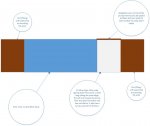Hi, I am new to the pool building and trying to better understand and follow various codes/requirements. Considering this pump and the instructions say:
Can anybody guess what could be the rationale for this? I have a pit right next to my in-ground pool where I planned to put the pump that would place it about 3 feet from the inside wall of the pool.
Thank you,
Mike
- Install a minimum of 5 feet (1.52 meters) from the inside wall of the pool and spa. Canadian installations require a minimum of 9.8 feet (3 meters) from pool water level.
Can anybody guess what could be the rationale for this? I have a pit right next to my in-ground pool where I planned to put the pump that would place it about 3 feet from the inside wall of the pool.
Thank you,
Mike


